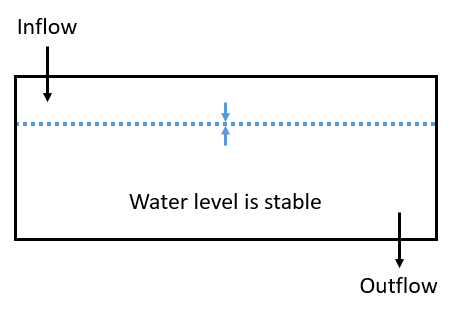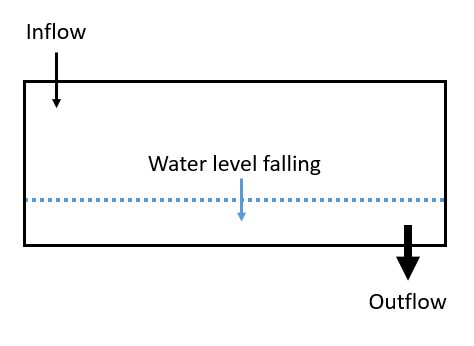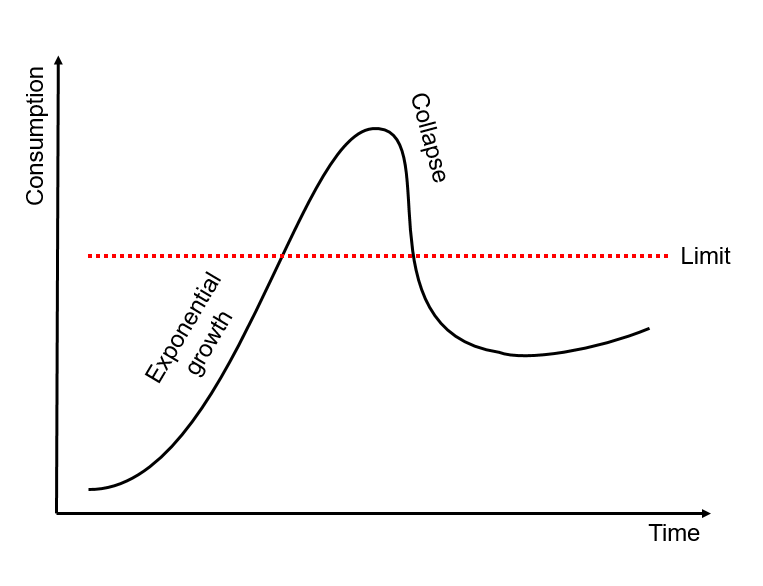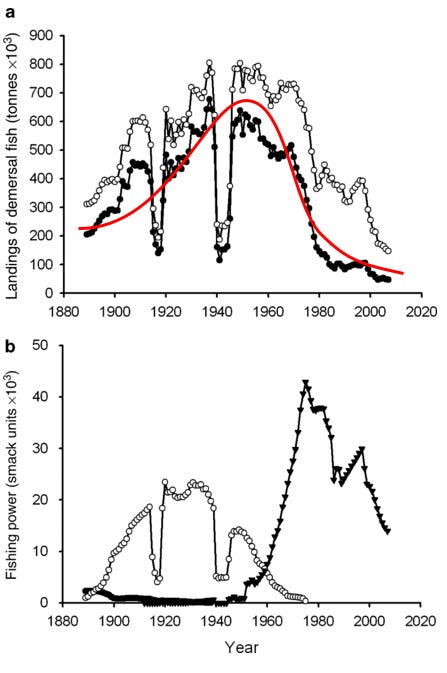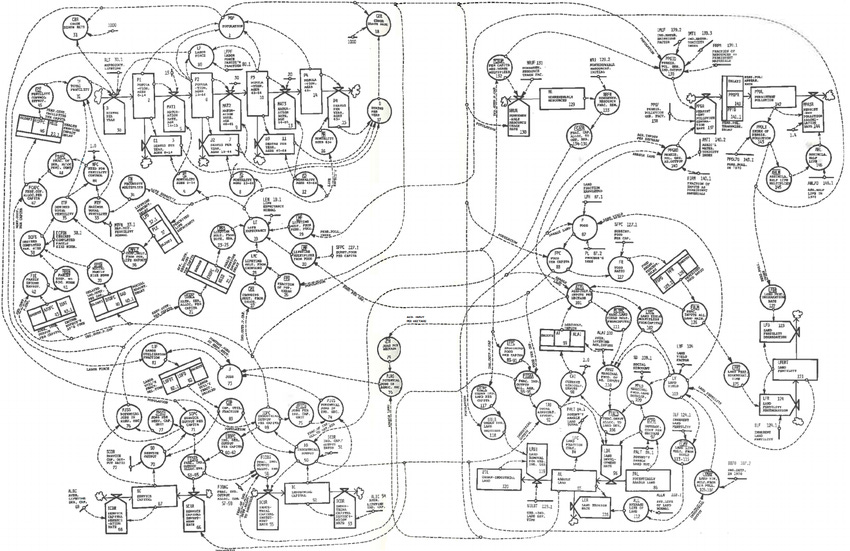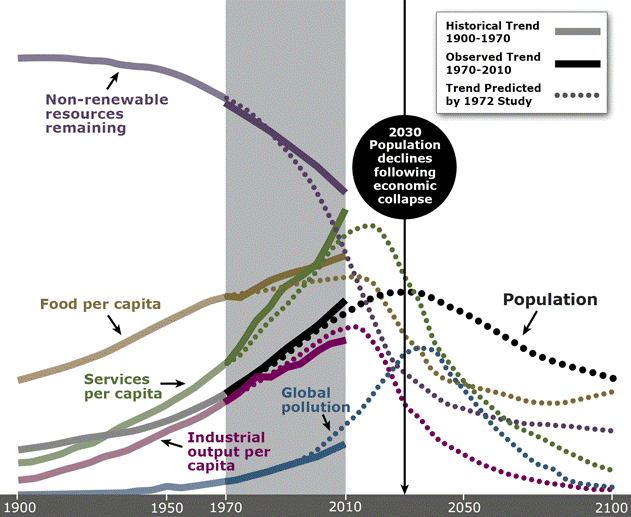Systems
Last week I enjoyed reading Limits to Growth by Donella Meadows. In it, I learned about systems thinking. I feel like I’ve metaphorically crossed an event horizon, heading towards a new way of looking at the world. Some of these insights are environmental (as I’ll discuss today), but the lessons also relate to startups and life.
Systems thinking appreciates the world’s inherent complexity. It encourages us to consider ‘problems’ in the context of a ‘system’ that might be itself be defective. The problem, therefore, wont be fixable without reforming the system.
Inside of us, there are billions of self-regulating systems (each cell is one). Our families, networks of friends and cities are each a system, as is the solar system and the universe. Systems are nested in systems—each is reliant on those beneath it.
Every system has at least one inflow, one outflow and a stock (or reservoir).
A bath is a system. It has an inflow (water from the tap) and an outflow (water out of the plug). The tub itself is a stock (of water). There are two ways to fill a bath up. Most obviously, we could turn the tap. Otherwise, we could constrain the amount of water that leaves via the plug.
When the inputs and outputs are equal, the stock is stable. No matter where the water level is (nearly full or nearly empty), it maintains its position.
If the outflow is increased, and the inflow doesn’t change, then the stock (water level) will fall and deplete.
Stock is maintains stability and means that the inflows don’t have to match the outflows exactly. For example, if I had to buy food at the same rate that I ate it, life would be difficult. A fridge allows me to hold stock and snack.
The act of depletion is happening to our environment, becuse key stocks are being used up faster than they are being replenished. Stocks, like oil reserves, mean we don’t see the rate of depletion clearly. When—finally—the bath does empty, it will become very apparent very quickly.
There are limits to the rate at which we can consume stocks. The economist Herman Daly famously defined these limits in the context of the environment:
Sustainable use of renewable resources means that the pace should not be faster than the rate at which they regenerate.
Sustainable use of non-renewable resources means that the pace should not be faster than the rate at which their renewable substitutes can be put in place.
Sustainable rate of emission for pollution and and wastes means that it should not be faster than the pace at which natural systems can absorb them, recycle them, or render them harmless.
He also outlined what would happen if we crossed them: collapse ensues.
Fish stocks in the North Sea show us what happens when Daly’s laws are breached.
In the two graphs below, you can see fish stocks tumbling from the 1960s onwards (‘demersal fish’ are bottom-feeders like cod, plaice, sole, turbot and halibut). This collapse is commensurate with the rise in fishing power—specifically the introduction of motorized trawlers—shown in the second graph.
Fishing fleets, enabled by the exponential growth in technology, unknowingly surpassed limits. Fish stocks collapsed. These limites are (and were) overrun because the information available is imperfect, and because incentives are misaligned. It was, at the time, commercially viable for fleets to double-down and overfish because, if you didn’t, someone else would profit from the remaining stock. In most areas, this is still true.
(a) Total landings of bottom-living fish species into England and Wales (closed circles) and the United Kingdom (open circles) by British vessels from 1889 to 2007. [my red line showing the trend] (b) Estimated total fishing power of large British trawlers registered to England and Wales from 1889 to 2007. Closed circles indicate sail trawlers, open circles indicate steam trawlers and closed triangles indicate motor trawlers.
In 1972, Meadows (the author of Limits to Growth) and her team developed a model of the world named World3. Since then, the model has been revised three times—most recently in the early 2000s.
The following diagram is the systems diagram for the model. You can see a network of stocks, inflows, outflows and feedback loops. It’s complex and accounts for technology change, the distribution of human and industrial capital, and the finite resources (such as oil) that we rely on.
Using this model, Meadows ran scenarios. The ‘standard’ scenario is shown below. It forecasts a collapse similar to the destruction of North Sea fish stocks in the 60s; we overrun our unseen limits, and a collapse ensues.
According to the model, it will result in a fall in life expectancy, quality of life, and industrial output. Again, like the fisheries, we’ll only realise too late that environmental breakdown is happening.
As an optimist, I’m confident we have a utopian future ahead. However, there will have to be a shift in priority from ‘economic growth’ (that relies on unrestrained consumption) to sustainability. A sustainable world is where the inflows and outflows are balanced and where we live within Daly’s limits. It seems some way off from today.
Have a great week, and please do recycle.
Hector
For more reading:
The effects of 118 years of industrial fishing on UK bottom trawl fisheries



